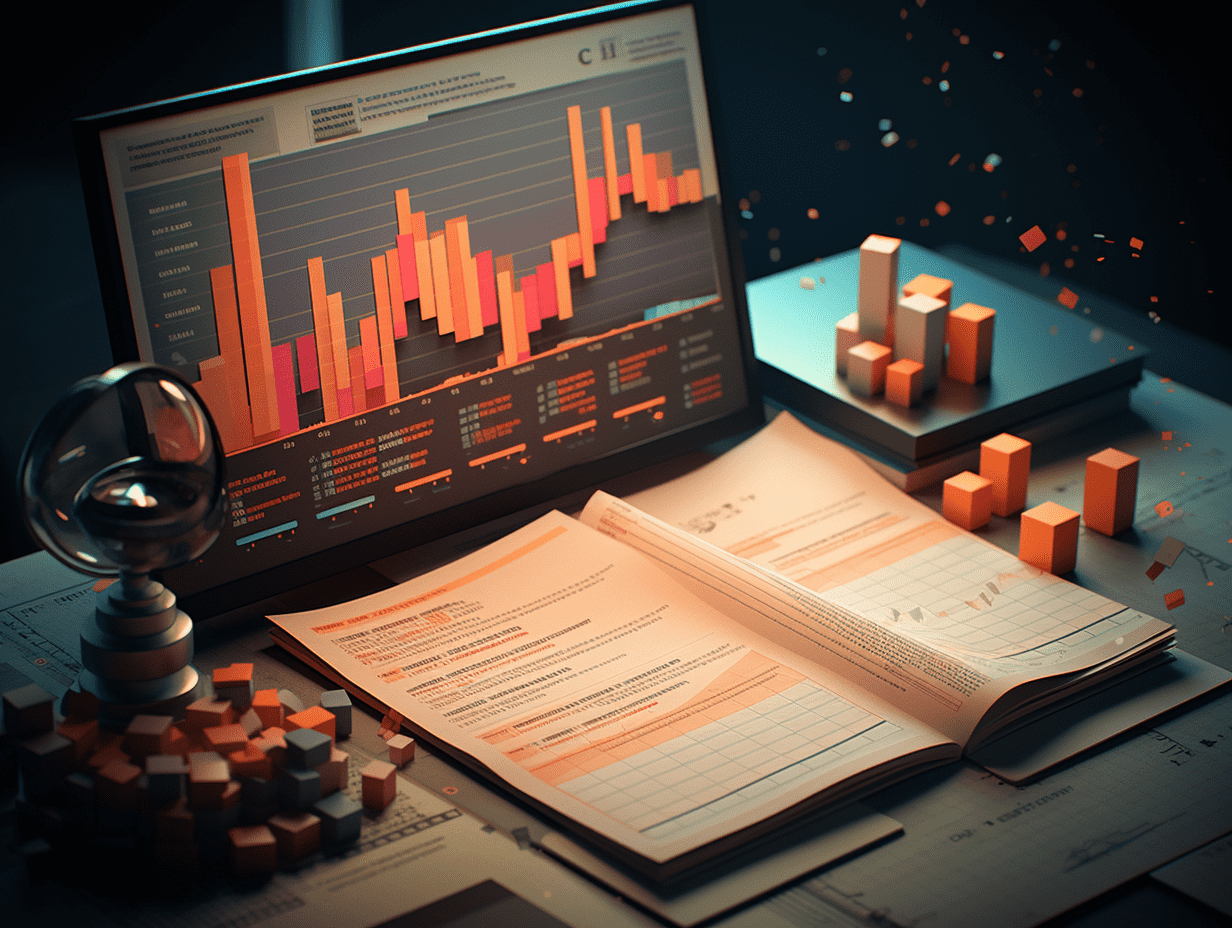CITIC SEC: Corporate IT spending rebounds and the speed of AI productization accelerates. The US software sector has entered a period of improving performance.
Citibank Securities released a research report stating that, based on the current situation, looking ahead to the next 12 to 24 months, the bank believes that software will become the most attractive sector for investment in the technology field.
CITIC SEC has released a research report stating that, based on the current situation and looking ahead to the next 12-24 months, the firm believes that software will become the most attractive sector for investment in the technology field. This is mainly because the core factors that previously suppressed the sector are expected to gradually ease, and turn into positive catalysts, including the potential for enterprise IT spending to enter an upward cycle, acceleration of AI productization and commercialization by 2025, and the fact that most companies in the sector are currently trading at historically low valuations.
Although the firm believes that investors will continue to closely monitor the sustainability of performance improvement and the progress of AI commercialization, there has been a significant change in market sentiment towards this sector. Looking ahead to 2025, the firm believes that companies with strong past performance, continued upward trend, and rapid progress in AI will continue to benefit, while companies with the potential for a turning point in performance and historically low valuations are also worth continuous attention, as they may realize greater valuation potential.
CITIC SEC's main points are as follows:
Overall assessment: Software SaaS is the top pick for investment in the US technology sector in 2025.
Based on the current situation and looking ahead to the next 12-24 months, the firm believes that software will become the most attractive sector for investment in the technology field, mainly because the core factors that previously suppressed the sector are expected to gradually ease and turn into positive catalysts. This includes the potential for enterprise IT spending to enter an upward cycle, acceleration of AI productization and commercialization by 2025, and the fact that most companies in the sector are currently trading at historically low valuations.
1) Software Spending: The firm sees a broad recovery of software spending starting in the third quarter, involving a wide range of customer groups and scenarios, with signs of stabilization and recovery of spending from the most affected SMB and digital native customer groups due to macroeconomic pressures and budget controls. Considering that spending trends in enterprises often have sustainability once the direction is clear, the firm tends to believe that US enterprise software spending has gradually entered a recovery cycle.
2) AI Acceleration: In terms of application software, the evolution of AI products from Assist form to Agent form is expected to cover more customer scenarios and generate higher ROI. Investors hope that the introduction of Agents will significantly contribute to the performance of relevant companies by 2025; in terms of basic software, the growth of AI-related revenue mainly depends on the implementation of more AI applications in production environments. The firm believes that the revenue related to basic software AI is expected to increase significantly in 2025 with the actual implementation of more AI applications.
3) Valuation Position: In stages where software spending is generally under pressure, spending tends to concentrate on areas with rigid and high-priority expenditure that can integrate spending, and most software companies are still trading at historically low levels. If enterprise software spending enters a recovery cycle in 2025, the firm believes that the spending will gradually spread, and subsectors under previous pressure are expected to show significant performance and valuation elasticity.
Priority ranking: High performance elasticity, low valuation is preferred.
Based on the belief that the US enterprise software spending has gradually entered a recovery cycle, the firm believes that companies with strong past performance, continued upward trend, and rapid progress in AI will continue to benefit in the future. These include: 1) companies in the application software sector with a superior layout, strong execution, and fast adoption of AI. 2) Broad ERP targets that are expected to accelerate performance with the cloudification of ERP. 3) The information security sector with strong and continuous demand.
At the same time, the firm believes that companies with the potential for a turning point in performance and historically low valuations are still worth watching, including: 1) cloud-based software companies. If demand continues to recover, combined with accelerated AI-related revenue, the firm believes that the performance growth of basic software companies may exceed expectations and have the potential for high year-on-year growth. 2) Companies with significant pressure from some customer groups. These companies have a high proportion of SMBs, or experienced excessive purchasing from some customer groups during the pandemic, factors that have significantly dragged down growth rates in the past.Now. Looking ahead, on the one hand, the demand of SMB customers is beginning to stabilize and improve, and on the other hand, the impact of excessive purchases during the epidemic period will also be basically digested by the end of this year. These companies are expected to regain growth momentum and realize greater resilience.Follow-up focuses: macro and inflation, government budget, progress of GenAI, etc.
Looking ahead to 2025, in addition to the above analysis, the bank believes there are some related factors worth closely monitoring.
1) Risks of economic re-inflation: Although overall inflation in the United States is currently falling, considering the stickiness of inflation in the U.S. labor market that supports core PCE, the bank believes that inflation pressure in the United States is unlikely to quickly dissipate, and the Federal Reserve may slow down its rate cuts or even adjust its policies when inflation rises. If rate cut expectations are hindered, interest rates may remain at a relatively high level, continuing to suppress the valuation and performance of the software sector.
2) Impact of U.S. government spending cuts: The U.S. government's establishment of the Department of Government Efficiency (DOGE) to cut non-core budgets may affect contract income and R&D funds for cloud computing, network security, and other companies. However, in the long term, global IT spending demand is expected to remain robust, and regulatory relaxation is favorable for market competition and technological innovation, especially in the rapid development of AI, cloud computing, and fintech.
3) Constraints and potential risks in the diffusion of AI applications: Although GenAI has aroused great enthusiasm in the market, the actual implementation process still faces issues such as computing resources, cost, security, and privacy risks. In addition, the technical capabilities and business models of AI still need further improvement, and the performance and cost issues of AI agents in handling complex tasks remain to be resolved, which may also hinder the commercialization of AI in the future.
Risk factors:
Risk of core AI technology development falling short of expectations; risk of continued tightening of technology policy regulation; risk of policy regulation related to private data; risk of global macroeconomic recovery falling short of expectations; risk of macroeconomic fluctuations leading to lower-than-expected IT spending by European and American companies; potential ethical, moral, and privacy risks of AI; risk of data leakage and information security for companies; risk of continuous intensification of industry competition, etc.
Related Articles

CK LIFE SCIENCES(00775): Positive results achieved in the mid-term analysis of the Phase IIb study of Halneuron in treating chemotherapy-induced neuropathic pain.

Bitcoin winter is coming? Whale Strategy (MSTR.US) pauses buying spree, hoarding $2.2 billion in cash to prepare for winter.

Shanghai Fosun Pharmaceutical (02196) responds to the acquisition of LvGu Pharmaceutical: The confirmatory clinical research on mannitol sodium capsules has been recognized by the Drug Evaluation Center, with a total of 580 cases enrolled.
CK LIFE SCIENCES(00775): Positive results achieved in the mid-term analysis of the Phase IIb study of Halneuron in treating chemotherapy-induced neuropathic pain.

Bitcoin winter is coming? Whale Strategy (MSTR.US) pauses buying spree, hoarding $2.2 billion in cash to prepare for winter.

Shanghai Fosun Pharmaceutical (02196) responds to the acquisition of LvGu Pharmaceutical: The confirmatory clinical research on mannitol sodium capsules has been recognized by the Drug Evaluation Center, with a total of 580 cases enrolled.






